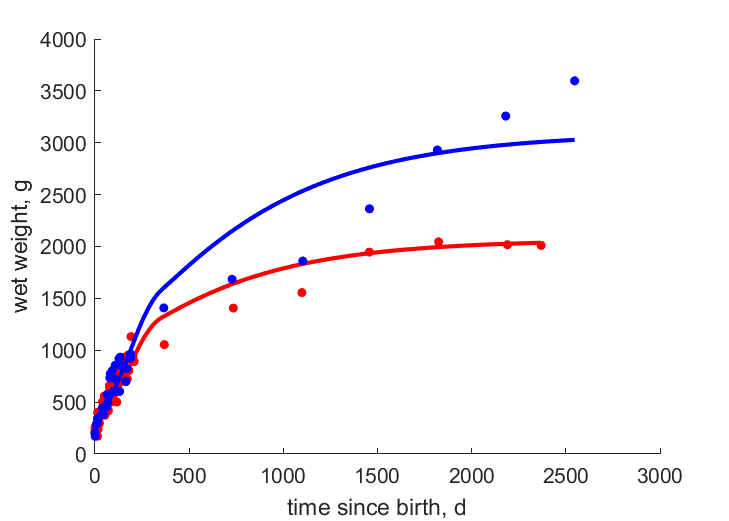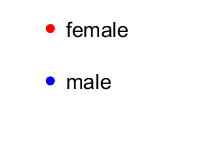Predictions & Data for this entry
| Model: stx | climate: A | migrate: | phylum: |
| COMPLETE = 2.5 | ecozone: TN | food: bxM, xiH, xiCi, xiCv | class: |
| MRE = 0.046 | habitat: 0iTf | gender: Dg | order: |
| SMSE = 0.009 | embryo: Tv | reprod: O | family: |
Zero-variate data
| Data | Observed | Predicted | (RE) | Unit | Description | Reference |
|---|---|---|---|---|---|---|
| tg | 158 | 159.8 | (0.01142) | d | gestation time | AnAge |
| tx | 307 | 304.8 | (0.007074) | d | time since birth at weaning | AnAge |
| tp | 1703 | 1576 | (0.07469) | d | time since birth at puberty | AnAge |
| am | 1.679e+04 | 1.706e+04 | (0.01601) | d | life span | AnAge |
| Li | 40 | 39.85 | (0.003788) | cm | ultimate body length | Wiki |
| Wwb | 239.7 | 240.5 | (0.003448) | g | wet weight at birth | AnAge |
| Wwi | 2000 | 2062 | (0.03123) | g | ultimate wet weight | Wiki |
| Ri | 0.001121 | 0.001087 | (0.02998) | #/d | maximum reprod rate | AnAge |
Uni- and bivariate data
| Data | Figure | Independent variable | Dependent variable | (RE) | Reference |
|---|---|---|---|---|---|
| tW_f |   | time since birth | wet weight | (0.1298) | Hone2006 |
| tW_m |   | time since birth | wet weight | (0.1514) | Hone2006 |
Pseudo-data at Tref = 20°C
| Data | Generalised animal | Sapajus apella | Unit | Description |
|---|---|---|---|---|
| v | 0.02 | 0.01556 | cm/d | energy conductance |
| kap | 0.8 | 0.6493 | - | allocation fraction to soma |
| kap_R | 0.95 | 0.95 | - | reproduction efficiency |
| p_M | 18 | 18.49 | J/d.cm^3 | vol-spec som maint |
| k_J | 0.002 | 0.002 | 1/d | maturity maint rate coefficient |
| kap_G | 0.8 | 0.8009 | - | growth efficiency |
| t_0 | 0 | 9.831e-05 | d | time at start development |
| k | 0.3 | 0.8475 | - | maintenance ratio |
Discussion
- males are assumed to differ from females by {p_Am} only
- assimilation during lactation is assumed to exceed that after
- mod_1: males have equal state variables at b, compared to females
Bibliography